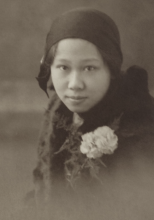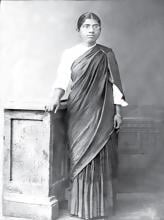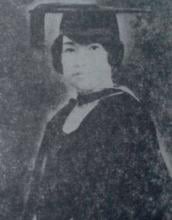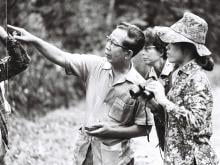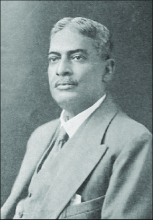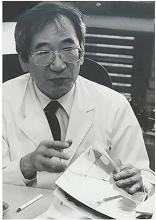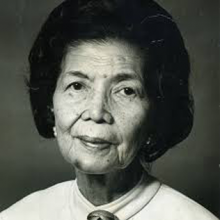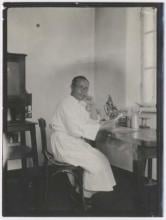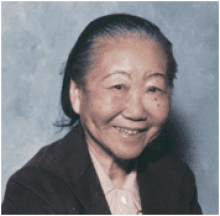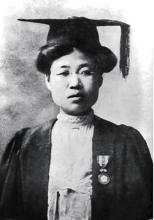Medicine
News

31 Oct 2006
A research group headed by Takashi Tsuji of the Tokyo University of Science's Tissue Engineering Research Center identified mechanisms behind outbreaks of adult T-cell leukemia.

29 Oct 2006
Magnetic cooling demonstrated in a gas, A step towards quantum networks, Seeing the benefits of nanoceria, A potential male contraceptive, Towards a complete human ‘epigenome’, Small RNAs drive evolution, Genetic risk for schizophrenia and brain function, Knocking out false positives in interaction proteomics

26 Oct 2006
Should willing individuals be allowed to sell their kidneys? Yes, according to a Viewpoint article in Nature Clinical Practice Nephrology, which argues that failure to regulate kidney sales could be unethical. Abdallah S Daar asserts that the traditional moral arguments against payment for organs are difficult to sustain under close scrutiny.

25 Oct 2006
Nuclear forensics, Global cooling preceded life on Earth, DNA degradation link to rheumatoid arthritis, Lampreys, the supreme survival specialists, The conductivity of mantle minerals, Largest avian skull runs rings around agility theory

25 Oct 2006
A new technology that mimics the suspension of white blood cells in blood in the body is reported online this week in Cell Research. The novel joystick-controlled laser traps that the authors use provide valuable new information on how white blood cells engulf bacteria – a crucial part of the body’s defense against infection.

22 Oct 2006
Summaries of other newsworthy papers from Nature include Inducing connections between brain sites alters motor function - Nature, The bottom line for silk - Nature Materials, Bittersweet news for neural stem cell grafts - Nature Medicine, TAPping into mammalian interaction proteomics - Nature Methods

19 Oct 2006
The culture conditions under which human embryonic stem cells can be converted into cells that produce all five hormones made by the pancreas, including insulin, are reported online in Nature Biotechnology this week.

18 Oct 2006
‘Linguistics’ spawns new antimicrobial drugs, Stop picking on the big guys, Moon's south pole unlikely to have thick ice deposits, Bang on in the Andromeda galaxy, Cancer stem cells resist radiotherapy, Primitive fish surprisingly advanced, Neurodegeneration, Two pores colliding, Getting to the roots of the fungal family tree.......

15 Oct 2006
As more people look to weight loss surgery to address their expanding waist lines, new research suggests that the best way to drop a few dress sizes is to opt for the mini - as in mini-gastric bypass surgery.

15 Oct 2006
LONDON – The International Journal of Surgery proudly announces the launch of its new open access website www.theijs.com.

15 Oct 2006
Summaries of newsworthy papers from Nature Journals include New sex determination gene identified - Nature Genetics, Towards better anti-epileptic drugs - Nature Neuroscience, We have no blue bananas - Nature Neuroscience

13 Oct 2006
Research published in the open-access journal BMC Urology shows that early recanalization ― the most frequent cause of vasectomy failure ― is more common than previously thought. It also confirms that certain vasectomy techniques are associated with lower risk of recanalization, and that wider use of these could reduce vasectomy failure rates.

11 Oct 2006
Vaccinating the Ethiopian wolf, Titan's ocean lost forever?, Oxygen puzzle solved?, Modelling the early Universe, Controlling the insulin-degrading enzyme may relieve Alzheimer’s disease, Towards a quantum network and finally… Salamanders see red

08 Oct 2006
Women with mutations in a gene called BRIP1 have twice the normal risk of breast cancer, according to a study to be published in the November issue of Nature Genetics.

04 Oct 2006
This study aim to investigate the knowledge and attitudes of nursing students in Dar es Salaam regarding HIV infection and AIDS, identifying in the process, areas which need to be changed or emphasized for provision, of better nursing care of HIV–infected and AIDS patients, and with minimal occupational risk of acquiring HIV infection.

03 Oct 2006
Potential novel targets for anti-cancer therapy are revealed in a paper to be published online this week in Molecular Systems Biology. Forest White and colleagues investigated the EGFR/HER2 signaling pathway, which is perturbed in human breast cancer.

01 Oct 2006
A molecule that makes mammals feel full up has been identified, and drugs that target it may help to treat obesity. Other newsworthy papers include Vision: Bug eyes get a makeover - Nature, One step toward more efficient cloning - Nature Genetics, New strategy for controlling inflammation - Nature Immunology

01 Oct 2006
The September issue of this international journal from Keio University is now available online.

29 Sep 2006
Recommendations published in the October issue of Nature Clinical Practice Gastroenterology & Hepatology should help physicians to identify quickly whether or not a patient is suitable for treatment with nonsteroidal anti-inflammatory drugs (NSAIDs).

28 Sep 2006
Dust mites produce an allergen that disrupts the skin’s ability to act as a barrier to other allergens and environmental irritants according to research published this week in the Journal of Investigative Dermatology.

27 Sep 2006
Methane on the rise?, 1918 influenza virus triggered exaggerated immune response, Malaria riddle explained, Massive stars require gas doughnuts, Extremophile’s extreme repair job, Solid turns into bizarre state of matter, Hot condensation and Silk spun by tarantula feet

26 Sep 2006
A special focus issue on childhood developmental disorders, including specific language impairment and dyslexia, autism, and the mental retardation syndrome fragile X, is presented in the October issue of Nature Neuroscience. Four articles explore current knowledge about these disorders and suggest avenues for future research.

24 Sep 2006
Cancer can be tackled with a combination of drug and genetic therapies, such that the effectiveness of the individual treatments are enhanced, as shown by Yi-Yan Yang and colleagues in the October issue of Nature Materials.

22 Sep 2006
Heart disease should top the list of women’s health concerns but, according to a Viewpoint article to be published in the October issue of Nature Clinical Practice Cardiovascular Medicine, it doesn’t even come close.

21 Sep 2006
A new technique to visualize HIV particles inside infected cells as they make their way to the nucleus is reported in the October issue of Nature Methods. Pierre Charneau’s and colleagues show HIV’s internal voyage with unprecedented detail for the first time.

21 Sep 2006
A genetic study to be published in The EMBO Journal could help in the design of better therapies to treat some cases of immunodeficiency and inflammation.

20 Sep 2006
Summaries of newsworthy papers from Nature including Obesity drug development in double bind, Atlantic waters influence El Niño impact, ‘Atomic clock’ gets designer label, Accelerated Greenland ice sheet melting confirmed, Creating a 'shadow person' illusion

17 Sep 2006
Summaries of newsworthy papers from Nature and Nature Research Journals including Quantum teleportation with increased capacity – Nature Physics, Overcoming bacterial virulence – Nature Immunology

10 Sep 2006
A study of patients who became infected with H5N1 in Vietnam reveals clues as to why the avian influenza virus is so virulent, according to research to be published in the October issue of Nature Medicine.

10 Sep 2006
NATURE AND THE NATURE RESEARCH JOURNALS PRESS RELEASE. Summaries of newsworthy papers include RNA interference screens questioned, Bacterial genome provides clues for better bioplastics, Attention can impair visual perception, Regulating the immune response
Researchers
Sorry, no researchers coming up for this topic.
- « first
- ‹ previous
- 1
- 2
- 3
- 4
Giants in history
Michiaki Takahashi (17 February 1928 – 16 December 2013) was a Japanese virologist who developed the first chickenpox vaccine.
Irene Ayako Uchida’s (8 April 1917 – 30 July 2013) strides to understand genetic diseases such as Down syndrome paved the way for early screening of chromosomal abnormalities in foetuses.
Baron Kitasato Shibasaburo (29 January 1856 – 13 June 1931) was a Japanese physician and bacteriologist whose work led to a new understanding of preventing and treating tetanus, diphtheria and anthrax.
Maggie Lim (5 January 1913 – November 1995) was a Singaporean physician who promoted family planning and expanded the access to clinics to improve the quality of life for mothers and children in Singapore’s early days.
By isolating soil microorganisms and studying the compounds they produce, Satoshi Omura (born 1935) discovered almost 500 organic compounds with unique properties that were produced by these microorganisms, including many new antibiotics.
The founder of the Adyar Cancer Institute in India, Muthulakshmi Reddy (30 July 1886 – 22 July 1968), fought to uplift women and girls from impoverished situations.
Chinese-American virologist and molecular biologist Flossie Wong-Staal (27 August 1946 – 8 July 2020) was the first scientist to clone HIV and determine the function of its genes.
Maharani Chakravorty (1937 – 2015) was one of India’s earliest molecular biologists whose research paved the way for advances in the treatment of bacterial and viral infections.
Archana Sharma (16 February 1932 - 14 January 2008) conducted research into plant and human genetics that expanded the understanding of both botany and human health. In relation to botany, she uncovered the means by which asexually-reproducing plants evolve into new species.
The first Thai woman to receive a degree in medicine, Margaret Lin Xavier (29 May 1898 – 6 December 1932), is best remembered for her compassion towards her less privileged patients.
In 1915, pathologist Katsusaburo Yamagiwa and his research assistant Koichi Ichikawa became the first to prove that chronic exposure to chemicals can cause cancer.
In 1915, Koichi Ichikawa along with pathologist Katsusaburo Yamagiwa became the first to prove that chronic exposure to chemicals can cause cancer.
Husband and wife team, Kimishige (3 December 1925 – 6 July 2018) and Teruko Ishizaka (28 September 1926 – 4 June 2019) discovered the antibody class Immunoglobulin E (IgE) that triggers allergic reactions. They also discovered that IgE antibodies attach to white blood cells, known as mast cells, releasing histamine, which causes allergic reactions.
Husband and wife team, Kimishige (3 December 1925 – 6 July 2018) and Teruko Ishizaka (28 September 1926 – 4 June 2019) discovered the antibody class Immunoglobulin E (IgE) that triggers allergic reactions. They also discovered that IgE antibodies attach to white blood cells, known as mast cells, releasing histamine, which causes allergic reactions.
Japanese chemist Takamine Jokichi (3 November 1854 – 22 July 1922) founded the Tokyo Artificial Fertilizer Company, where he isolated a starch-digesting enzyme (named takadiastase) from the fungus Aspergillus oryzae.
Ground-breaking cancer researcher Kamal Jayasing Ranadive (8 November 1917 – 11 April 2001) advanced the understanding of the causes of leukaemia, breast cancer and oesophageal cancer through the use of animal models. She was also among the first to recognise how susceptibility to cancer is linked to tumour-causing interactions between hormones and viruses.
The research of Filipino pharmaceutical chemist Luz Oliveros-Belardo (3 November 1906 – 12 December 1999) focussed on essential oils and other chemicals derived from native Philippine plants.
Thai physician and conservationist Boonsong Lekagul (1907 – 1992) made major contributions to the preservation of his country’s wildlife.
Indian scientist and physician Upendranath Brahmachari (19 December 1873–6 February 1946) is best known for creating a drug called Urea Stibamine, used to safely and reliably treat visceral leishmaniasis (or Kala-azar), a severe infection caused by the Leishmania parasite.
Filipino chemist and pharmacist Manuel A. Zamora (29 March 1870 – 9 July 1929) is best remembered for his discovery of the tiki-tiki formula to combat beriberi, a disease caused by Vitamin B1 deficiency.
Korean parasitologist Seung-Yull Cho (16 November 1943 – 27 January 2019) is remembered largely for his pioneering works to control infections caused by helminthic parasites and his contribution to journal publishing.
Fe Villanueva del Mundo (27 November 1911 – 6 August 2011) was a Filipina paediatrician who founded the Philippines’ first paediatric hospital.
After witnessing death and suffering as a youth in his home village during World War II, Nguyễn Tài Thu (6 April 1931 – 14 February 2021) set his sights on alleviating pain by becoming a doctor. After studying Traditional Chinese Medicine in China in the 1950s, Thu returned to Vietnam to serve in military hospitals. Eventually, he became the country’s foremost practitioner of acupuncture, a technique he first learned by inserting needles into himself.
Minoru Shirota (April 23, 1899 – March 10, 1982) was a Japanese microbiologist who invented the popular fermented drink Yakult.
Wu Lien-teh (10 March 1879 – 21 January 1960) was a Malaysian-born doctor who invented a mask that effectively suppressed disease transmission. Winning the prestigious Queen’s Scholarship enabled Wu to become the first Chinese student to study medicine at the University of Cambridge.
David T. Wong (born 1936) is a Hong Kong-born American neuroscientist who is best known for discovering the antidepressant drug fluoxetine, better known as Prozac.
Indian organic chemist Asima Chatterjee (1917 to 2006) studied the medicinal properties of plant products, especially compounds known as vinca alkaloids.
Chika Kuroda (24 March 1884 – 8 November 1968) was a Japanese chemist whose research focussed on the structures of natural pigments.
Umetaro Suzuki (7 April 1874 – 20 September 1943) was a Japanese scientist best remembered for his research on beriberi, a disease caused by vitamin B1 deficiency, characterized by limb stiffness, paralysis and pain.
Salimuzzaman Siddiqui (19 October 1897 – 14 April 1994) was an artist and chemist from Pakistan whose research focused on natural products from plants.
Barry Paw (29 August 1962 – 28 December 2017) was a biologist and oncologist who discovered several novel genes and their functions in red blood cells.
Syed Qasim Mehdi (13 February 1941 – 28 September 2016) was a Pakistani molecular biologist who was a founding member of the Human Genome Diversity Project (HGDP), which assessed human diversity by studying human migration, mutation rates, relationships between different populations, genes involved in height and selective pressure.
Tsai-Fan Yu (1911 – 2 March 2007) was a Chinese-American physician and researcher who was the first female full professor at Mount Sinai School of Medicine. She discovered that gout, a condition characterized by the painful inflammation of joints, was caused by elevated levels of uric acid in the bloodstream.
Min Chueh Chang (10 October 1908 – 5 June 1991) was a Chinese-American biologist who studied fertilization in mammalian reproduction.
A Japanese surgeon, Tetsuzo Akutsu (20 August 1922 – 9 August 2007) built the first artificial heart capable of keeping an animal alive.
Ogino Ginko (3 March 1851 – 23 June 1913) was the first registered female doctor to practise modern medicine in Japan.
Esther Park (1877-1910), born Kim Jeom-dong, was the first female Korean physician to practise modern medicine in Korea and trained the first generation of Korean female doctors.





